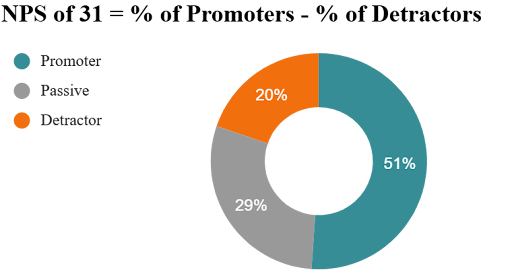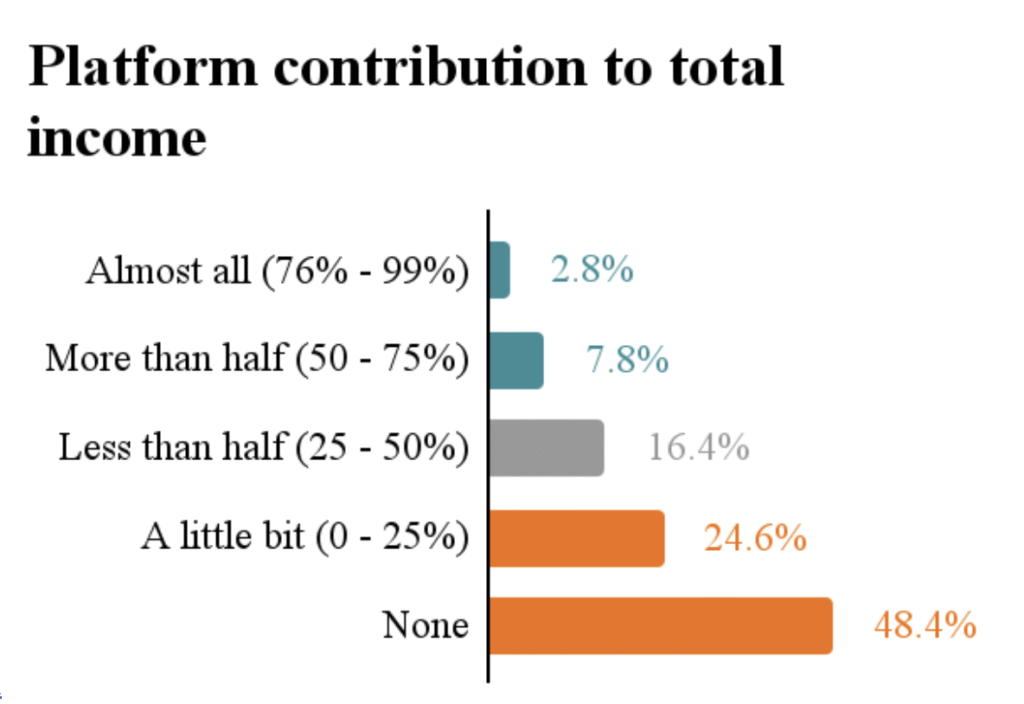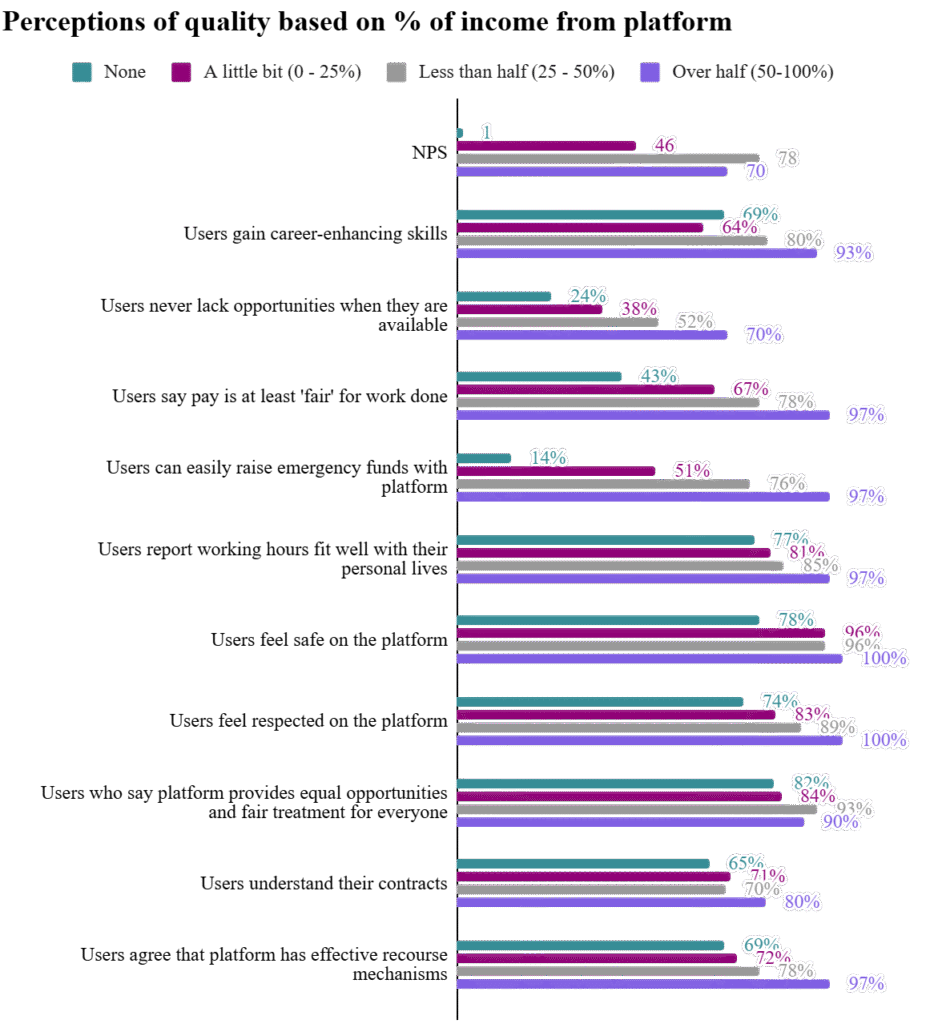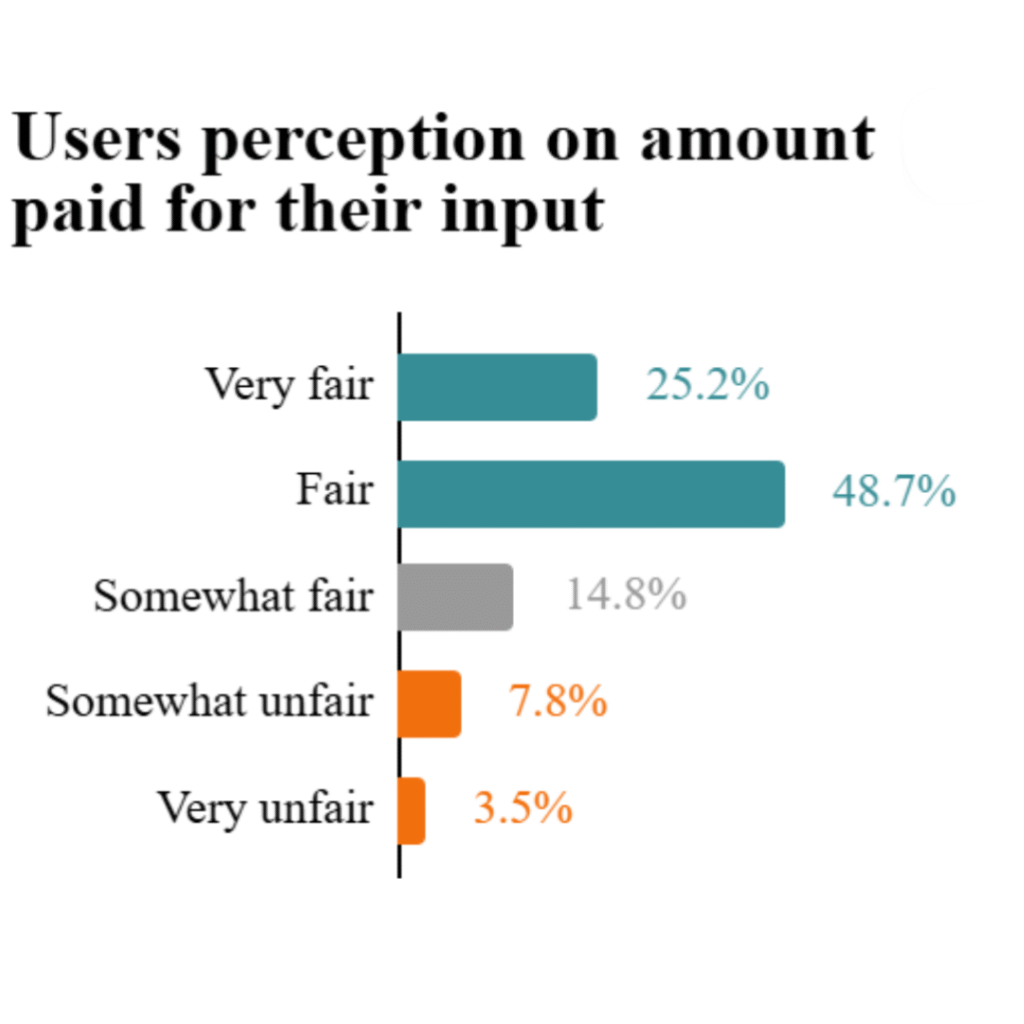By Jared Adema and Margarita Dimova
TL;DR: The pilot of our Jobtech Quality of Work Measurement Tool found that perceptions of quality of work are driven mainly by how much work users secure on a platform.
We have some fresh insights on users’ perceptions of the quality of work on jobtech platforms. Recently, we piloted the Jobtech Quality of Work Measurement Tool in Nigeria with1:
- Platform A (180 users, 35.6% women): a creative industry platform (digitally delivered work) where users are solopreneurs in full control of their engagements, including sales and earnings.
- Platform B (101 users, 8.9% women): a blue-collar skilled trades platform (offline work) where users depend on the platform to match them with opportunities, when those are available.
The very positive NPS and rating distribution genuinely surprised us.
Most users are happy with the quality of work…
Even though most users were not earning a large percentage of their income on the two platforms, they were overall happy with the quality of work jobtech platforms provide.

😍 Promoter (9-10): Loyal enthusiasts who recommend
😐 Passive (7-8): Generally satisfied but neutral
😠 Detractor (0-6): Dissatisfied users who might speak negatively

…despite not earning as much as they wish they could
As we’ve discussed before, platforms typically have an uneven distribution of income. Our pilot found that only about 1 in 10 users earns more than half of their total income from the platform.
This aligns with our data on microearners, which shows that even for those earning (rather than just being registered) on platforms, approximately 70% are earning small amounts.
Most respondents had a range of income sources. Over two-thirds secured their livelihood from two or more different income sources. And half of all respondents were satisfied with such a diverse and fluid portfolio of work.


Quality = quantity
Turns out perceptions of quality of work are driven by…how much work people get on a given platform. In almost every metric, users who earned more from the platform were more satisfied.

This was a much stronger indicator of differences than other factors such as gender, for example.
So, quantity of work drives satisfaction. This aligns with the Jobtech Alliance’s consistent finding from our venture support programme that the largest constraint for users on most platforms is the availability of work.
Two other critical aspects of users’ satisfaction really jumped out at us: their perceptions of equal opportunity, and fairness of pay for the work performed.
High perceptions of equality
The vast majority of the users (85.6%) felt that the platforms offer equal opportunity and fair treatment for everyone, regardless of factors like gender, race and religion, among others. Only under 1% of users had seen or experienced discrimination.
But when we looked at Platform A, on which women were better (but still not equally) represented, we saw a gendered difference in perceived equality. We looked specifically at individuals who reported earning income within the past three months. Among them, men were much more likely than women to perceive equal opportunities on the platform: 91% vs 80%.

Solid foundations for fairness, safety and dignity
Perceptions of fairness were pretty solid in terms of the amount paid for the work done.
Among users who had earned through either of the platforms over a three-month period, nearly three-quarters felt that the payment they received was either “fair” or “very fair” for the amount of work they put in. Only about a tenth found payment “somewhat” or “very unfair “. Platforms that set the rates of payment were more likely to see such negative perceptions.
The overwhelming majority of users also felt safe (87.2%) and respected (81%), with fewer than 1% experiencing threats to their safety or dignity or knowing someone who had had that experience on the platform.

But there is a nuance to this. The majority of respondents were on Platform A, where work is delivered digitally. Their perceptions of safety could be attributed to the online and remote setup.
Where does that leave us?
Addressing the inconsistency of work is the single most important step to making jobtech a more viable and sustainable source of income and empowerment, across gender and age.
A majority of users (51%) reported that platforms add little to their total personal income because there are not enough consistent opportunities. Passives and detractors uniformly pointed to the need to provide regular/predictable job opportunities and strengthen demand generation. This theme resonates strongly with our findings on microearners; what they want more than anything else is more work.
- We also had a third, domestic work platform (offline work) in our pilot, but were unable to gather meaningful data from Platform C. ↩︎

0 Comments